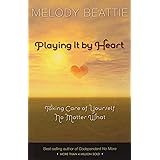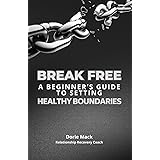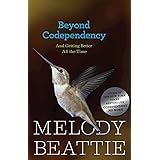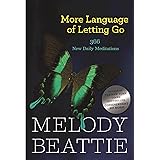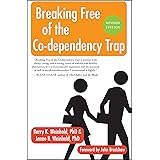One might recall a favorite classic, a film often rewatched during cozy autumn evenings, that seems to capture the essence of modern relationships with timeless wit. Indeed, for many, that film is When Harry Met Sally. The video above offers a fresh perspective on this beloved romantic comedy, diving deep into its iconic characters and their intricate relationship dynamics. It is within the layers of Harry Burns and Sally Albright’s journey that audiences often find reflections of their own experiences with friendship, love, and the often-bumpy road to self-discovery.
Upon initial viewing, the film appears to be a straightforward exploration of whether men and women can truly be just friends. However, a closer inspection, as suggested in the accompanying video, reveals a narrative rich with complex character portrayals that transcend typical rom-com tropes. The enduring popularity of When Harry Met Sally is often attributed to its authentic dialogue and its protagonists’ relatable flaws, which resonate with viewers decades after its release.
The Enduring Appeal of When Harry Met Sally
The film, released in 1989, quickly established itself as a cornerstone of the romantic comedy genre. Its script, penned by Nora Ephron, is celebrated for its sharp humor and insightful observations on human connection. The direction by Rob Reiner also played a crucial role, allowing Meg Ryan and Billy Crystal to deliver performances that made their characters indelible.
Beyond the Meet-Cute: A Deeper Look at Harry and Sally’s Journey
At its core, When Harry Met Sally presents a refreshing alternative to traditional love stories. Rather than focusing on an immediate spark, the film chronicles more than a decade of encounters, disagreements, and evolving affections. This extended timeline allows for a more nuanced character development, where protagonists are given space to grow and change, sometimes in unexpected ways.
Initially, Harry and Sally are introduced as almost antithetical personalities, each holding strong, often clashing, views on love and friendship. Their journey from mutual irritation to deep platonic intimacy and finally to romantic love is depicted with a realism that many find compelling. Consequently, the film avoids the pitfalls of saccharine sentimentality, grounding its romance in the messy realities of life.
Unpacking Harry Burns: A Character Study in Evolution
Harry Burns, as portrayed by Billy Crystal, is a character whose layers are gradually peeled back throughout the film. His initial cynicism about relationships and women is a defining trait. This perspective is often viewed as a defense mechanism, a shield against potential emotional vulnerability.
The Early Harry: Cynicism and Emotional Distance
When Harry first meets Sally on their fateful Chicago to New York drive, he is dating Amanda, Sally’s friend. His remarks about men and women being unable to be friends without sex getting in the way establish his cynical worldview early on. This attitude, however, is not presented as purely malicious; rather, it often seems to stem from a perceived wisdom or a fear of genuine connection. He is depicted as someone who, even when interested, struggles with expressing sincere emotion without deflection or humor.
The Apology and Shifting Dynamics
A significant turning point in Harry’s character arc, as highlighted in the video, occurs when he sincerely apologizes to Sally. His question, “What’s the statute of limitations on apologies?” and Sally’s response, “Ten years!”, mark a crucial moment of authenticity. This willingness to drop his guard and offer genuine remorse signals a shift, indicating that his relationship with Sally has begun to transcend his usual patterns of superficiality. It is suggested that this vulnerability moves their relationship into a new phase of deeper friendship and mutual respect, which is a powerful demonstration of growth.
Commitment-Phobia and Post-Divorce Reckoning
Harry’s commitment-phobia is another central aspect of his character, which is explored both before and after his marriage to Helen. Before marriage, his evasiveness might be interpreted as a general fear of intimacy or a preference for casual encounters. However, his post-divorce behavior, characterized by sleeping around “for revenge” as Sally puts it, indicates a deeper emotional wound. This period showcases Harry attempting to navigate pain and heartbreak, often through actions that are self-destructive or emotionally detached. The film subtly suggests that his seemingly narcissistic tendencies during this time are, in part, a response to personal devastation, underscoring the complexities of his emotional landscape.
Sally Albright: More Than “Pretty Privilege”
Sally Albright, played by Meg Ryan, is often seen as the more grounded of the two, yet her character is just as intricately drawn. Her seemingly perfect facade often masks a deeper set of insecurities and specific quirks that define her personality. The video astutely notes that Sally sometimes benefits from “pretty privilege,” where her attractiveness might lead people to project desired personalities onto her, rather than engaging with her true self.
The “Too Smart for Her Own Good” Trope
A poignant visual detail, mentioned in the transcript, is Sally holding a book titled “Too smart for her own good” during an early scene. This seemingly minor prop offers a significant insight into her self-perception and perhaps her past relationship struggles. It hints at a narrative where Sally’s intelligence or strong-willed nature might have been perceived as a barrier in her romantic life, leading to a series of “failed relationships” as the speaker humorously suggests. This self-awareness, though tinged with irony, adds a layer of vulnerability to her otherwise composed exterior.
Sally’s Quirks and Perceived Flaws
Sally’s famous quirks, such as her finicky eating habits and meticulous ordering, are often played for comedic effect. While these are presented as “quirky annoyances” rather than severe flaws like those seen in characters like Bridget Jones, they still serve to humanize her. They suggest a need for control or a particular way of seeing the world, which can be both endearing and frustrating. This detailed portrayal helps Sally avoid becoming a one-dimensional character, allowing audiences to connect with her on a more authentic level.
Navigating Authenticity and Emotional Investment
Despite her outward composure, Sally also grapples with emotional honesty, particularly in the initial stages of her journey with Harry. Her regret at the airport, realizing Harry is the “only person she knows in New York,” yet not acting on it, speaks volumes about her hesitation to fully invest. Later, her “bitchy side” emerges when she learns of Harry’s engagement, indicating a subconscious emotional attachment long before she consciously acknowledges it. This gradual unfolding of her feelings and her struggles with vulnerability are crucial to understanding her character’s development throughout the film.
Relationship Dynamics: Authenticity vs. Pretense
The core theme of When Harry Met Sally revolves around the authenticity of relationships, whether platonic or romantic. The dynamic between Harry and Sally serves as a masterclass in how individuals navigate their true selves versus the roles they sometimes play in social interactions.
The Statute of Limitations on Apologies: A Turning Point
The concept of a “statute of limitations on apologies” not only signifies a personal breakthrough for Harry but also illuminates a broader truth about enduring relationships. It underscores the idea that true connection often requires acknowledging past wrongs and offering forgiveness, even years later. This moment is not merely a plot device; it serves as a powerful metaphor for the emotional labor involved in building and maintaining deep bonds. It is through such instances of genuine interaction that the film’s characters are allowed to evolve beyond their initial caricatures.
Challenging Traditional Rom-Com Tropes
Unlike many romantic comedies that rely on love triangles or grand gestures, When Harry Met Sally focuses on the nuanced interactions between two individuals. The speaker in the video contrasts it with Hugh Grant’s films, which often feature “love triangle with the kind of Jane Austen, Mr. Darcy thing.” Conversely, Harry and Sally’s story is driven by their dialogue and shared experiences, which gradually erode their defenses. This deliberate pacing allows the relationship to develop organically, making their eventual union feel earned rather than simply inevitable. The film deftly navigates the complexities of friendship turning into love, highlighting the subtle shifts in power dynamics and emotional investment that occur over time. It is a testament to the script’s brilliance that these characters, with all their quirks and flaws, are so deeply understood and loved by audiences.
Lessons (and Warnings) from a Classic Romantic Comedy
While When Harry Met Sally is celebrated for its insights into relationships, it is also important to consider its fictional nature. As the video speaker wisely notes, taking too much real-life dating advice from a movie, even one as insightful as this, might lead one “in the wrong direction.” Films, by their very nature, condense and dramatize life for narrative purposes, and characters are often composites rather than perfectly realistic individuals.
Distinguishing Fiction from Reality in Relationships
The characters of Harry and Sally, though relatable, are carefully constructed to serve a specific story. Sally’s flaws, for instance, are portrayed as “quirky annoyances” rather than deeply destructive traits, making her easier to love despite her imperfections. Real-world relationships, however, frequently involve a broader spectrum of challenges and complexities that extend beyond the screen. The film encourages reflection on topics like commitment, communication, and authenticity, yet it is understood that real-life emotional intelligence demands more than simply mimicking movie dialogues. It is a work of art that stimulates thought, not a prescriptive guide to romance. The enduring appeal of When Harry Met Sally as a cultural touchstone underscores its powerful influence on how relationships are perceived and discussed, even generations later.


